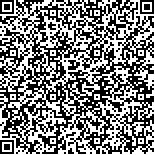| 引用本文: | 刘思婷,柯承杰,刘周杰,苏静,林荣芳,黄品芳,林玮玮.药物代谢酶和转运体基因多态性与中国癫痫患儿服用奥卡西平的活性代谢物血药浓度关联性研究[J].中国现代应用药学,2023,40(22):3146-3151. |
| LIU Siting,KE Chengjie,LIU Zhoujie,SU Jing,LIN Rongfang,HUANG Pingfang,LIN Weiwei.Association of Genetic Polymorphisms of the Drug Metabolizing Enzymes and Transporters with the Blood Concentrations of Active Metabolite of Oxcarbazepine in Chinese Pediatric Patients with Epilepsy[J].Chin J Mod Appl Pharm(中国现代应用药学),2023,40(22):3146-3151. |
|
| |
|
|
| 本文已被:浏览 2338次 下载 555次 |

码上扫一扫! |
|
|
| 药物代谢酶和转运体基因多态性与中国癫痫患儿服用奥卡西平的活性代谢物血药浓度关联性研究 |
|
刘思婷1,2,3, 柯承杰1,2, 刘周杰1,2, 苏静1,2,3, 林荣芳1,2, 黄品芳1,2, 林玮玮1,2,3
|
|
1.福建医科大学附属第一医院药学部, 福州 350005;2.福建医科大学附属第一医院滨海院区国家区域医疗中心药学部, 福州 350212;3.福建医科大学药学院, 福州 350122
|
|
| 摘要: |
| 目的 研究代谢酶和转运体基因多态性对中国癫痫患儿服用奥卡西平的活性代谢物10-羟基卡马西平(monohydroxycarbazepine,MHD)血药浓度是否有显著影响。方法 前瞻性收集年龄0~14岁服用奥卡西平达稳态的谷浓度血浆样本,酶放大免疫法测定患者MHD血药浓度,双脱氧链终止法检测患儿代谢酶基因UGT2B7 802T>C、UGT1A9 I399C>T,以及转运体基因ABCB1 3435C>T和ABCC2 1249G>A多态性,应用单因素方差分析与Fisher最小显著差检验法分析代谢酶和转运体基因多态性与奥卡西平活性代谢物血药浓度的关联性。结果 研究共收集161例癫痫患儿的谷浓度血浆样本,单因素方差分析显示,转运体基因ABCB1 3435C>T与MHD血药浓度显著相关(P<0.05)。随后进行Fisher最小显著差检验,携带ABCB1 3435C>T突变等位基因患儿的血浆MHD浓度明显高于非携带者,未见其他代谢酶和转运体基因多态性显著影响MHD血药浓度。结论 转运体基因ABCB1 3435C>T与中国癫痫患儿奥卡西平活性代谢物血药浓度存在显著关联性,对癫痫患儿给予奥卡西平时可作该位点基因多态性检测,为临床个体化给药提供参考。 |
| 关键词: 癫痫 奥卡西平 代谢酶 转运体 血药浓度 |
| DOI:10.13748/j.cnki.issn1007-7693.20232434 |
| 分类号:R969.4 |
| 基金项目:福建省自然科学基金项目(2021J01701);福建省科技计划项目(2021Y9090,2020Y0027) |
|
| Association of Genetic Polymorphisms of the Drug Metabolizing Enzymes and Transporters with the Blood Concentrations of Active Metabolite of Oxcarbazepine in Chinese Pediatric Patients with Epilepsy |
|
LIU Siting1,2,3, KE Chengjie1,2, LIU Zhoujie1,2, SU Jing1,2,3, LIN Rongfang1,2, HUANG Pingfang1,2, LIN Weiwei1,2,3
|
|
1.Department of Pharmacy, The First Affiliated Hospital of Fujian Medical University, Fuzhou 350005, China;2.Department of Pharmacy, National Regional Medical Center, Binhai Hospital, The First Affiliated Hospital of Fujian Medical University, Fuzhou 350212, China;3.School of Pharmacy, Fujian Medical University, Fuzhou 350122, China
|
| Abstract: |
| OBJECTIVE Oxcarbazepine(OXC) is an antiepileptic drug, which is metabolized to the active 10-monohydroxy derivative(MHD) after oral administration. The half-life period of MHD in children is significantly shorter than that in adults, and the clearance is increased by 30% to 160% compared with that in adults, which indicates that the pharmacokinetics(PK) of MHD in children is obviously different from that in adults, while adults and children exhibit different levels of expression of metabolism enzymes and transporter proteins with the same genotype. At present, there is no study describing the influence of genetic polymorphism of PK-related enzymes on MHD plasma concentrations in children with epilepsy. This study investigates whether the polymorphism of metabolic enzymes and transporter genes have significant effects on MHD plasma concentrations in children with epilepsy in China, so as to provide the reference for individualized application of OXC in pediatric patients. METHODS The plasma samples from pediatric patients with epilepsy aged 0-14 years old at the First Affiliated Hospital of Fujian Medical University who received OXC were prospective collected from June 2021 to June 2023. The MHD blood concentrations of the patients were measured using enzyme amplified immunoassay, and the metabolic enzyme genes UGT2B7 802T>C, UGT1A9 I399C>T, as well as the transporter genes ABCB1 3435C>T and ABCB2 1249G>A polymorphism were detected using dideoxy chain-termination method in epilepsy children. According to Hardy Weinberg's law of genetic balance, the theoretical values of genotype frequency of the patients were calculated, and a Chi-Square test method was used to compare whether there was a significant difference between the theoretical value and the measured value, to examine whether the genotype of the patients included in the study is accordance with the law of genetic balance. One-way ANOVA statistical method was used to analyze the correlation of the four single nucleotide polymorphisms, daily maintenance dosage of OXC, and MHD blood concentrations. Subsequently, Fisher's least significant difference(LSD) test was performed. LSD test is a pairwise comparison of the differences between the mean values of each group, calculated based on the standard error and degrees of freedom to obtain the minimum significant difference between each two groups, while P<0.05 indicated that the difference was significant. RESULTS In this study, 161 trough concentrations were collected from children with epilepsy. The genotype of the included population conformed to the genetic balance law, which indicated that the included patients were representative for the population. Unite analysis of variance showed a significant correlation between the transporter gene ABCB1 3435C>T and MHD blood drug concentration(P<0.05). Subsequently, Fisher's minimum significant difference test was conducted, and MHD plasma concentrations of patients carrying the ABCB1 3435C>T mutation allele were significantly higher than that of non-carriers. No significant association was found between the four single nucleotide polymorphisms and the daily maintenance dosage of OXC, and no significant impact of the other metabolic enzyme and transporter genetic polymorphisms on MHD plasma concentrations was found. CONCLUSION The results of research shows that the ABCB1 3435C>T polymorphism significantly affect the MHD blood concentration of pediatric patients with epilepsy, and the effects of UGT2B7 802T>C, UGT1A9 I399C>T and ABCB2 1249G>A genetic polymorphisms on MHD blood concentration and daily maintenance dosage of OXC are not found. The results suggest that MHD blood concentrations are significantly increased by affecting the expression of the encoded MDR1 transporter protein after ABCB1 3435C>T site mutation, which also may increase the risk of adverse reactions of OXC. The genetic polymorphisms of ABCB1 3435C>T can be detected in children with epilepsy when taking OXC, and the dosage can be adjusted appropriately for patients with genetic mutations. The results of this study can provide the reference for the individualized administration of OXC in clinic. |
| Key words: epilepsy oxcarbazepine metabolic enzymes transporter blood concentration |
|
|
|
|
